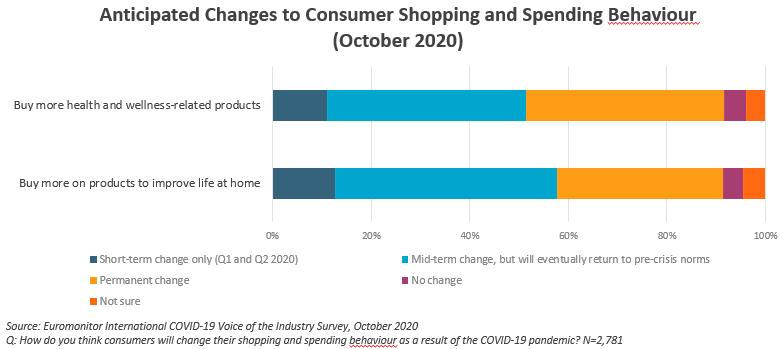Share to Facebook
Share to Twitter
Share to Linkedin
By Ryan Stoner, serial entrepreneur and brand strategy and marketing leader. He is currently Principal and Head of Strategy at
Dendro
.
getty
Has the pandemic fundamentally changed our priorities and how we organize our lives? Like many articles I’ve read on the topic, I say yes, but in a way that accelerated what was already happening to us all.
Wellness is not a new word, and pre-pandemic, many of us were trying to balance our hectic lives that were for the most part structured around our careers (and when I say careers, I include being a full-time parent as a career choice). However, since the pandemic, most of us were forced to take a step back and look at how we’re running our lives. The work-from-home lifestyle opened our eyes to new possibilities and priorities. In some cases, it completely changed our desire to climb the corporate career ladder or structure our lives around daily commutes and office hours in the name of advancement and success. It forced us to focus on ourselves because we were stuck with ourselves and couldn’t focus as much on others. And some younger professionals have adopted a completely different look at their burgeoning careers and have adopted a
YOLO attitude
(paywall), putting advancement on the back burner.
But if we don’t structure our lives around work, then what? Family? Absolutely, but to some degree, family has always been an organizing construct for our lives. However, wellness is starting to become a larger construct by which we organize our lives instead of just balancing out the mental, physical and emotional time and effort we put into work.
And just look at the resources we have to help us create a new life flow. It’s easier to eat cleaner with meal services or to lose weight with personal assistance from various companies. We can constantly be upskilling and improving ourselves with online learning services. Mental health has become a top priority and has become a destigmatized mainstream practice thanks to mental wellness services for meditation, therapy and more. Fitness is something that we used to try to squeeze in a few times a week. Now with home exercise equipment, classes and services, we can all ride, run, lift, stretch and do any number of things with regularity we’ve never before achieved. Despite what many consider a broken healthcare system, our access to both preventive and acute healthcare is ever-increasing with telehealth, discount prescription services, customized home medical products and more. Wellness
communities
are being built featuring more access to nature and wellness services and stressing the social aspects of a tight-knit community where work and wellness are blended together seamlessly. And if one isn’t fortunate enough to live in these proliferating communities, there’s certainly lots of
evidence
to support that the pandemic has accelerated the trend of people leaving larger cities in favor of smaller communities.
MORE FOR YOU
Meet Youssof Altoukhi: 16-Year-Old Entrepreneur Aiming To Increase Equality In Decision Making Among Cryptocurrency Projects

Overcoming Technology Addiction: Three Experiments To Try Now
How This Entrepreneur Went From Freelancer To Serial Entrepreneur
So what does this mean for brands? If people are changing their priorities and lifestyles, brands must change their strategies and tactics as well. One could argue that wellness isn’t just for wellness brands anymore. Every brand should think about what role they will play in the wellness revolution. If
beer brands
can do it, then I’d say most brands could do it. Here are some questions that brands should ask themselves:
1. Brand Role:
How are you fitting into the new flow of their lives? Do you empower people to save time and reprioritize? Do you provide them access to previously hard-to-access products or services, or remove barriers to wellness? Do you help motivate and inspire them? Help them stay on track? What are you doing to facilitate their wellness journey?
2. Partnerships:
Who are you partnering with as a brand to bring you credibility in the wellness space? How do your co-branding, partnership, influencer and sponsorship strategies reflect this prioritization to consumers?
3. Experts:
Who is advising you during this shift in the market? Do you have wellness experts who can counsel how you communicate and position your brands for success in a wellness-focused world?
4. Offering:
Do your products and services reflect the new priorities of consumers? What is your growth strategy, and how can it integrate more wellness-oriented offerings?
5. Experience:
How does your brand experience align with consumer priorities around wellness? Is there something you can change or improve about your packaging, rituals, digital experience, customer service or retail environment that supports wellness?
6. Flow:
How do your marketing and advertising fit into their new life flow? For many, morning wellness routines have replaced the morning commute. Afternoon walks and meditations have replaced the afternoon coffee break. The weekend has expanded, given
newfound productivity
levels Monday through Thursday. What adjustments can your brand make to better reach consumers?
As we emerge from the pandemic and as many return to a hybrid workplace, brands can help consumers maintain their wellness priorities and feel good about themselves and their state of being.









